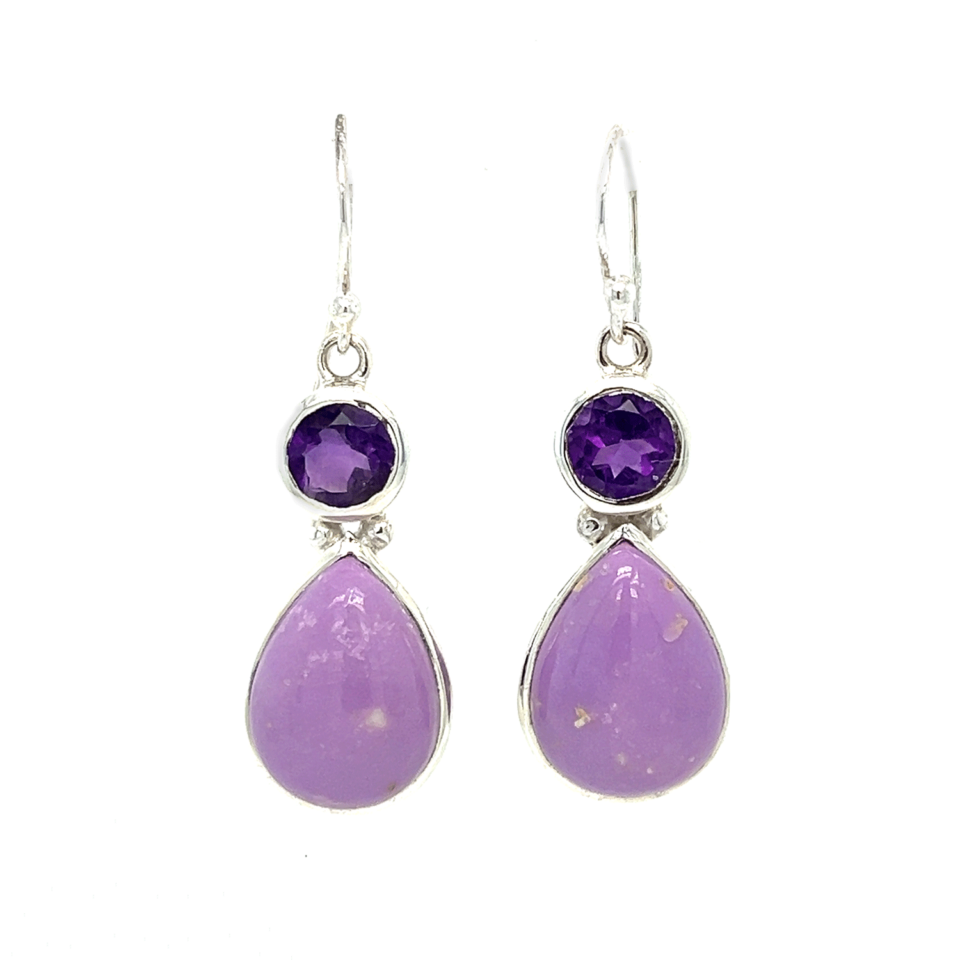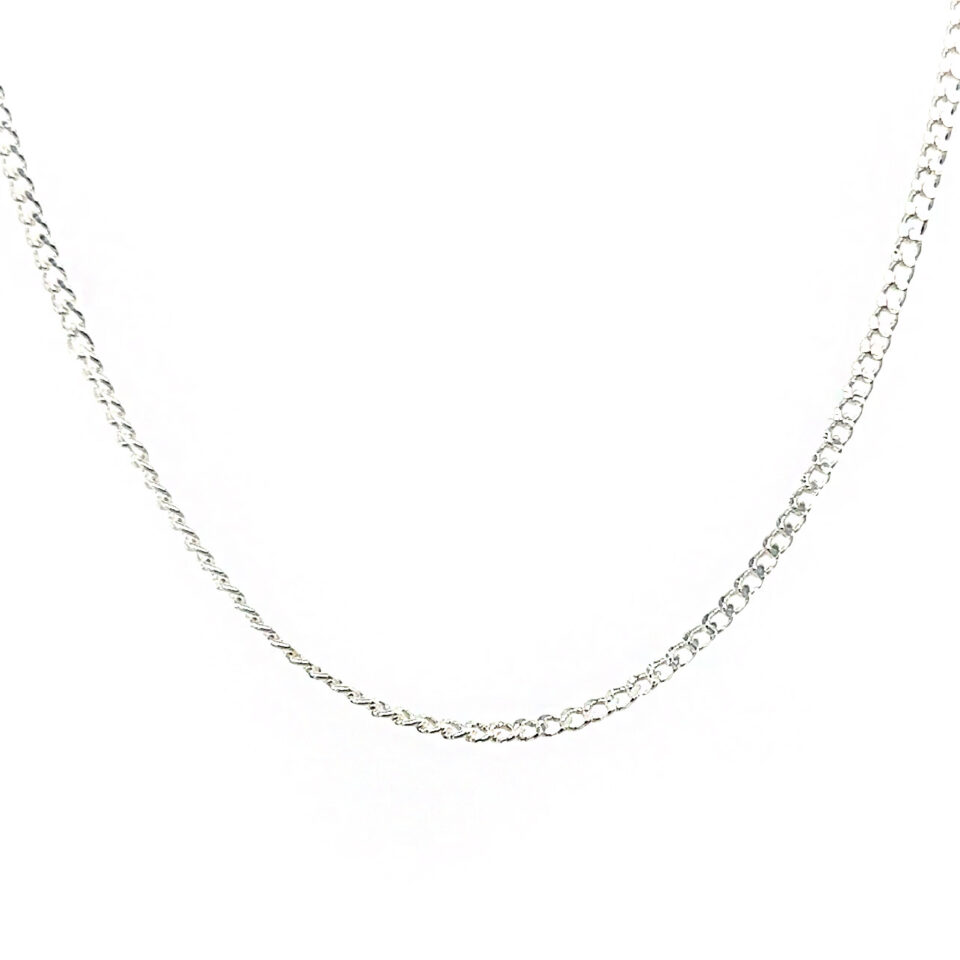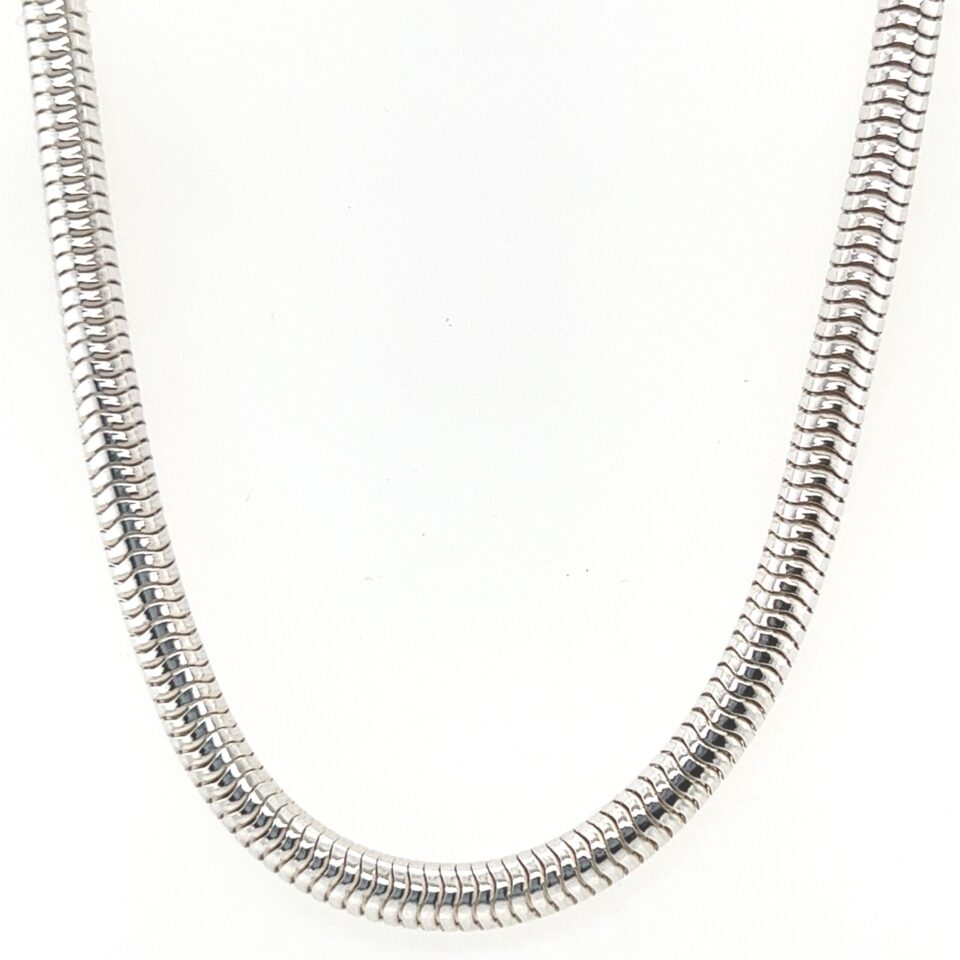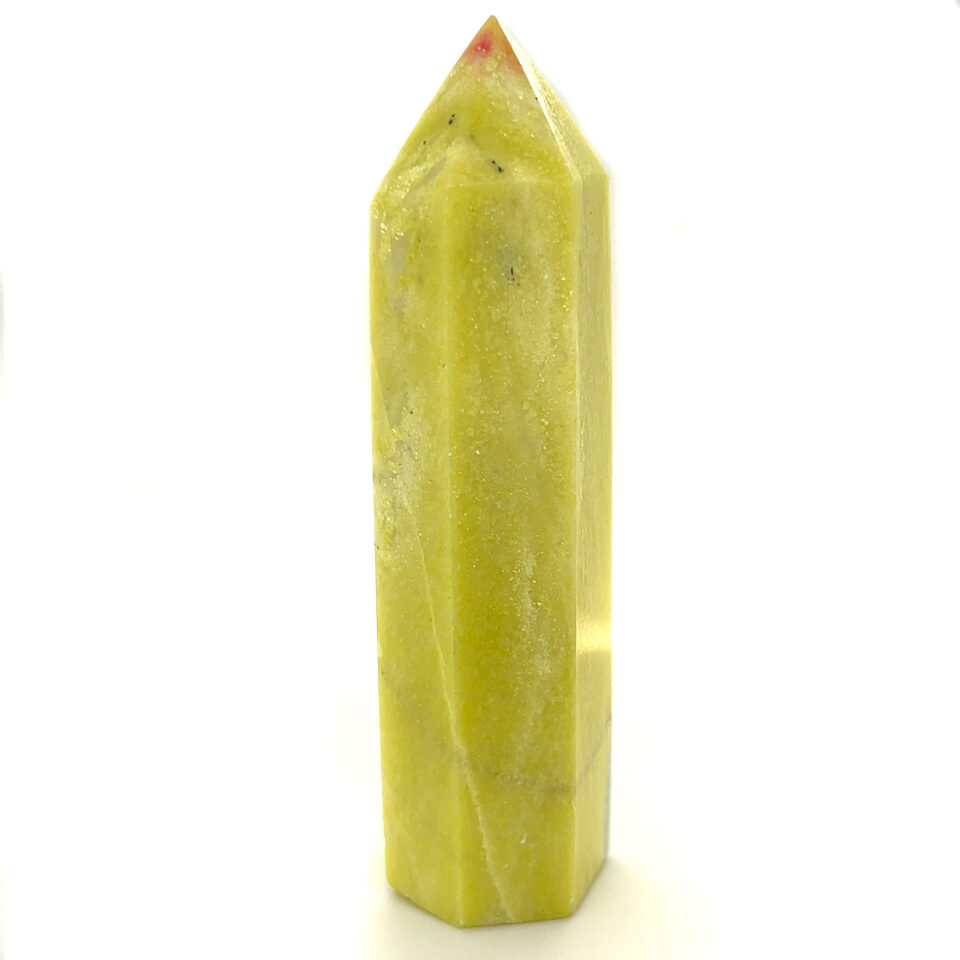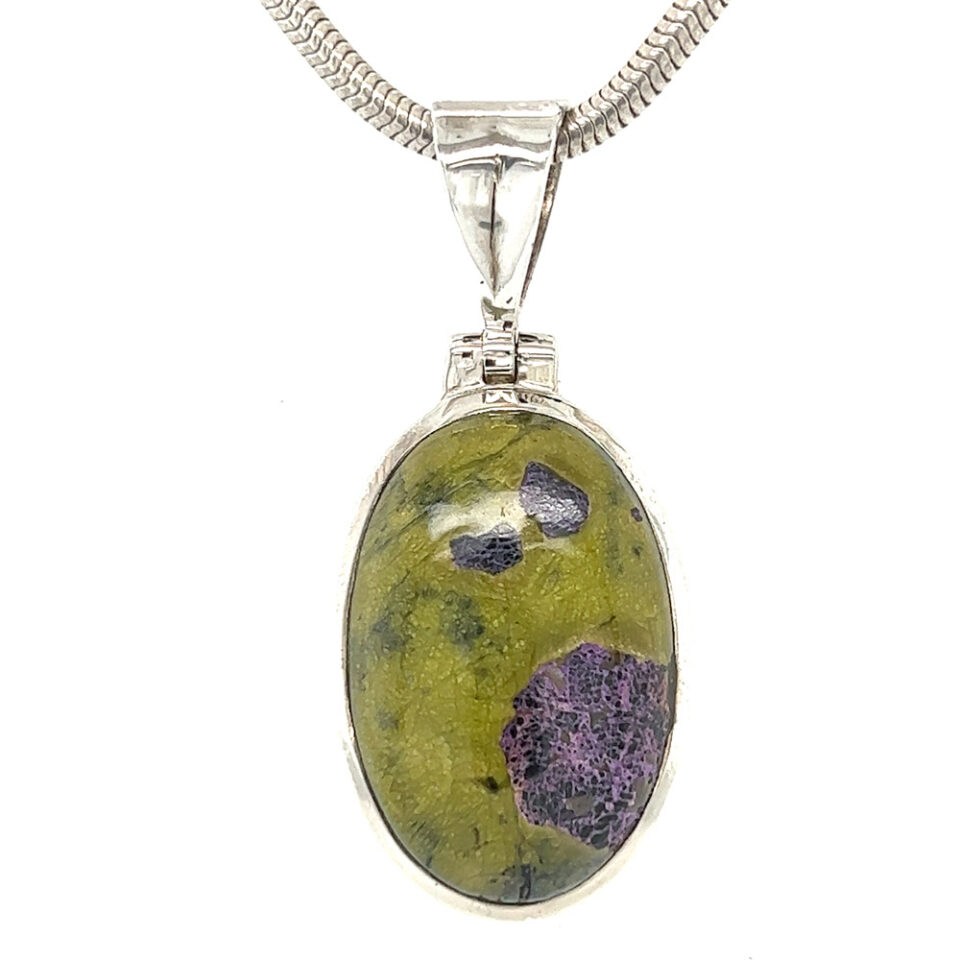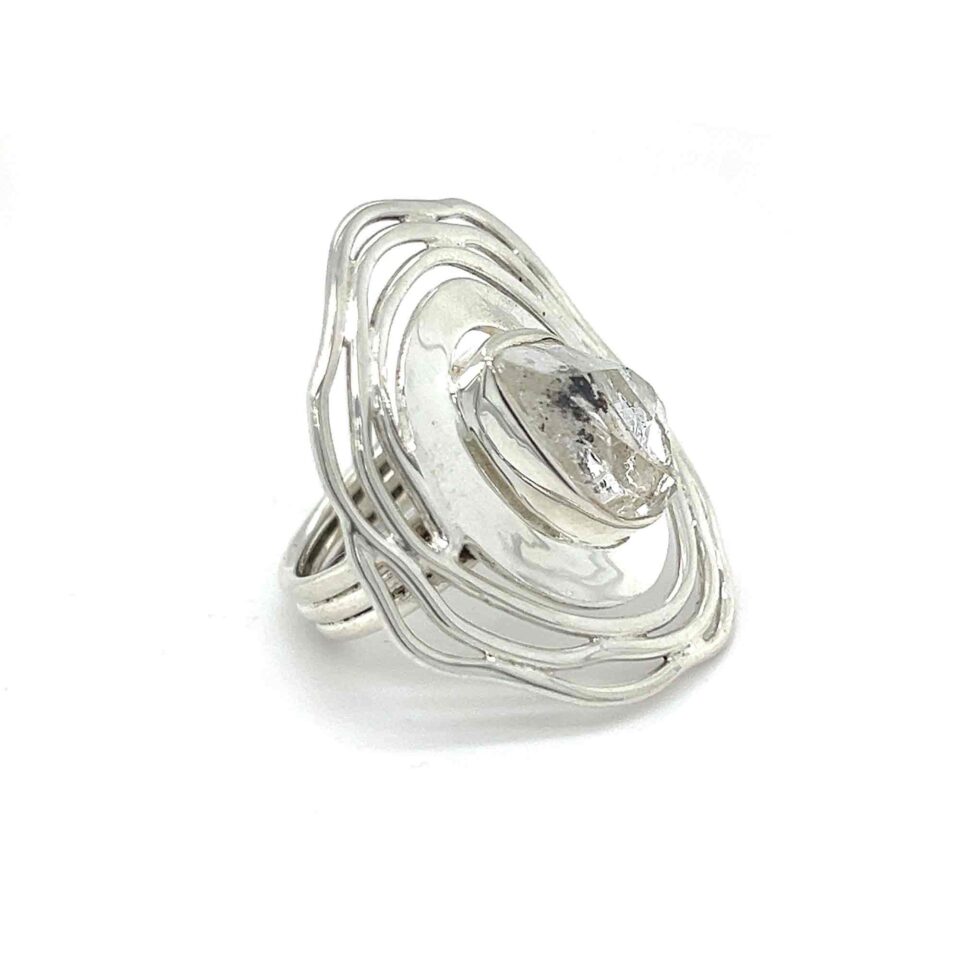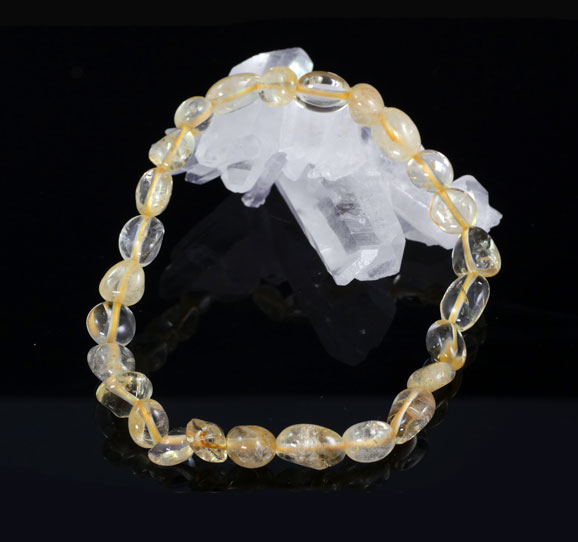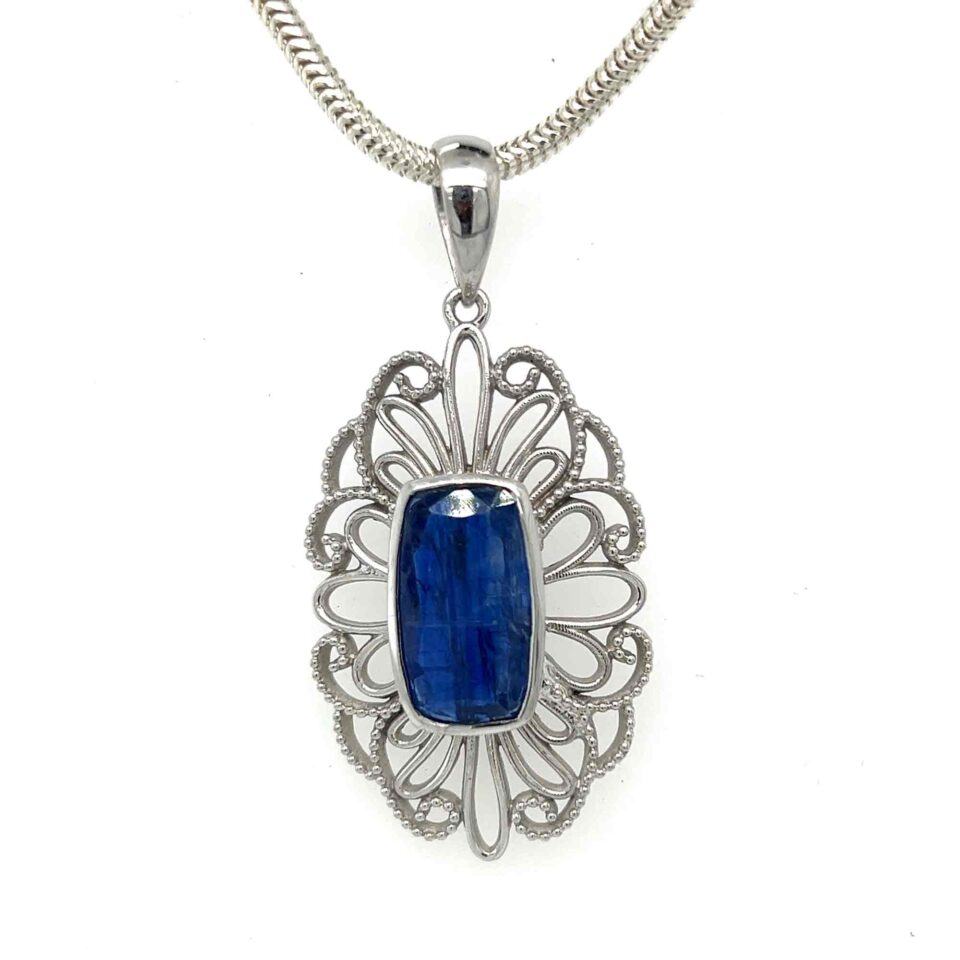Stichtite Serpentine Amethyst Pendant
Experience the enchanting beauty of our Stichtite Serpentine Amethyst Pendant. This exquisite piece features a circular faceted Amethyst, known for its deep purple hues and spiritual significance, elegantly placed atop a teardrop-shaped Stichtite Serpentine, polished to a smooth finish.
Set in a sterling silver setting, this pendant is a perfect blend of sophistication and natural charm, adding a touch of elegance to any outfit.
Complete your look with one of our sterling silver chains here.
Stichtite Serpentine Meanings
Emotional healing, stress relief, access to past life, transformation
Chakras: All
Elements: Earth, Wind
Zodiac Signs: Gemini, Scorpio, Virgo
Number: 8
Stichtite Serpentine Healing Properties
This rare combination of minerals carries the properties of both Serpentine and Stichtite.
Serpentine is thought to have the ability to calm and soothe the emotional aspect of our being, aiding in the release of fear related to change and challenges. It supports a positive outlook and an open mindset towards the future.
Traditionally, Serpentine has been used for activating Kundalini energy and clearing blocked energy centres.
Stichtite is believed to emit a vibration associated with love and forgiveness, fostering qualities of compassion, unity, and cooperation. This crystal is thought to provide protection from negativity by creating a protective bubble of light energy around the wearer.
It is believed that meditating with Stichtite Serpentine can assist in accessing skills and knowledge from previous lives, enabling the fulfilment of a specific purpose from that time in our present lifetime.
History and Uses
Stichtite Serpentine gets its name from the mineral stichtite, which was discovered in 1910 by R.F. Sticht in Tasmania, Australia. Stichtite is named in honour of Robert Carl Sticht, a chemist and manager of the Mt. Lyell Copper Mine in Tasmania. The green serpentine with purple veins or patches was later found to be a combination of serpentine and stichtite, and it became known as Stichtite Serpentine.
This Australian stone is sometimes called Tasmanite or Atlantisite. Atlantisite is a trading name coined by Gerald Pauley for the high-grade gem quality form, used in jewellery. This beautiful stone has been found relatively recently and only occurs at Stichtite Hill, a small hilltop in Zeehan, Tasmania, where it is exclusively mined.
In contrast, Serpentine is more widely found as a single mineral and is commonly found in South Africa, Canada and Australia.
Geological Description
Stichtite Serpentine forms as a result of the alteration of ultramafic rocks, such as peridotite or serpentinite, in the presence of water and other chemical reactions.
Serpentine minerals undergo a process called serpentinization, where the primary minerals are transformed into serpentine minerals, including Stichtite Serpentine. The purple veins or patches in Stichtite Serpentine are due to the presence of stichtite, a purple-coloured mineral rich in chromium and magnesium.
Affirmation
I embrace the challenges in my life with joy and optimism.
Amethyst Meanings
Protection, purification, divine connection, release of addictions
Chakra: Third Eye, Crown, Etheric
Element: Wind
Zodiac Signs: Pisces, Virgo, Aquarius, Capricorn, Scorpio, Sagittarius
Birthstone: February
Wedding Anniversary: 6th, 9th, 28th & 33rd year
Number: 3
Amethyst Crystal Healing Properties
Amethyst crystal meanings largely encompass emotional balance and facilitation of meditation. It is thought to open and clear the third-eye and crown chakras, which may aid in accelerating the development of intuition and psychic abilities.
Also, Amethyst has been known to help identify and change root causes behind behaviours and emotional patterns. It encourages us to take responsibility for our reality and is believed to promote inner peace.
Learn how to cleanse, activate and program your crystal to make the most of its potential. Click here to read our step by step guide.
History and Uses
Amethyst derives its name from ametusthos, meaning not intoxicated and relates to an ancient Greek legend. Dionysus, the god of celebration and revelry, declared he would have revenge on mortals for not drinking his wine. He decided to have the beautiful maiden named Amethyst eaten by his tigers while she was on her way to worship at the temple of Artemis, the virgin huntress. So, she called to Artemis for protection and the goddess turned her into a pure white quartz statue to save her from the tigers. When Dionysus saw how beautiful she was he was filled with remorse for his ruthlessness. He began to weep into his cup of wine which then spilled over the quartz statue turning it a beautiful shade of purple.
Amethyst can range in colour from lilac pink, to purple red to deep purple. In ancient times the Romans inlaid their cups with it, believing it would protect them from drunkenness. Similarly, Catholic bishops wore Amethyst rings to prevent mystical intoxication. Likewise, kissing the ring was thought to keep people focused on spiritual thoughts. It was used for protection from black magic and treachery and to ensure victory in war and in hunting.
Geological Description
This crystal is part of the Quartz family with a trigonal crystal system and a hardness of 7. Its purple colour comes from trace amounts of iron and aluminium. We find that the best quality specimens come from Brazil and Uruguay.
Affirmation
I trust in the higher purpose of my journey.





